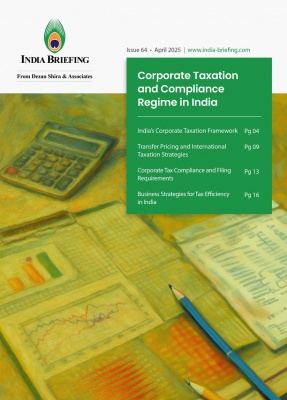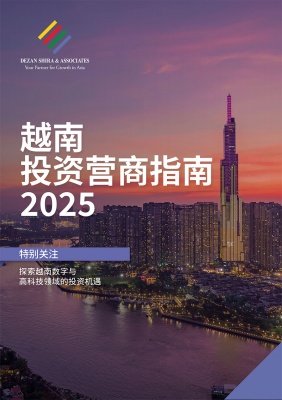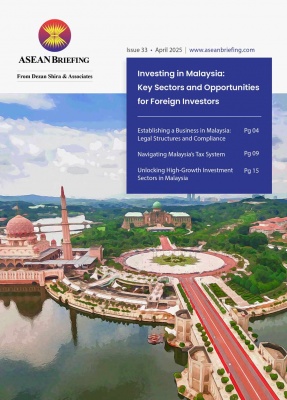
Our collection of resources based on what we have learned on the ground
Opportunities for Foreign Investors in India’s Manufacturing Sector
Q&AWhat do foreign investors need to know about the manufacturing sector in India?
Manufacturing has played a key role in the economic growth and development of India. Over the past couple of years, government of India has introduced several reforms and measures to boost India’s manufacturing sector.
The government understands that promoting manufacturing in India will help create more jobs in the sector, which contributes around 15% of the country’s GDP, and give a push to India’s export numbers.
Cumulative Foreign Direct Investment (FDI) in India’s manufacturing sector reached USD 89.15 billion between April 2000-December 2019. To further boost FDI, earlier in September 2019, government of India slashed the base corporate tax rate from 25 percent to 15 percent for new manufacturing firms incorporated after October 1, 2019 and starting operations before March 31, 2023. The rationalization of tax rates makes India a highly competitive investment destination when compared with other Asian countries.
India's huge domestic market, comparatively lower labor costs, improving infrastructure, presence of special economic zones and integrated industrial zones across the country, targeted incentives, and business-friendly policies are some of the factors attracting a number of foreign companies to start production in India.
The Indian government’s Make in India initiative has further aided growth of the industry. The programme aims to increase the share of manufacturing to 25% in India’s GDP and create 100 million jobs by 2022.
How is India planning to provide a boost to the manufacturing sector during the pandemic?
The coronavirus crisis has dealt a heavy blow to the world economy. To alleviate the COVID-19 situation in India, government announced an economic stimulus package of INR 20 Lakh Crore (US$ 285 billion), equivalent to 10 percent of India’s GDP. As a part of this package, various structural reforms have been announced, and liquidity infusion made, to address the cash crunch faced by companies - especially MSMEs.
FDI limit in defence manufacturing under automatic route is raised from 49% to 74% and various sectors including space have been opened up for private sector.
Earlier this year, government notified schemes worth INR 48,000 Crore (US$ 6.35 Bn) incentives to boost electronics production in India.
In a bid to attract foreign investors looking to shift their operations out of China, India is developing a land pool nearly double the size of Luxembourg. As reported in the media, a total area of 461,589 hectares has been identified across India, including 115,131 hectares of existing industrial land in few prominent states, such as Gujarat, Maharashtra, Tamil Nadu, and Andhra Pradesh.
Can you briefly explain the schemes put in place to boost electronics production?
The government notified three schemes to provide a boost to electronics manufacturing:
- production linked incentive (PLI) scheme for large scale electronics manufacturing
- promotion of manufacturing of electronic components & semiconductors
- modified electronics manufacturing clusters (EMC) scheme
Under PLI, electronic manufacturing companies will get an incentive of 4 to 6 percent on incremental sales (over base year) of goods manufactured in India and covered under target segments to eligible companies over a period of next 5 years.
For promotion of manufacturing of electronic components & semiconductors, a budget outlay of INR 3285 crore (US$ 435 Mn) spread over a period of eight years is notified.
Under EMC, financial assistance up to 50 percent of the project cost subject to a ceiling of INR 70 crore (US$ 9.25 Bn) per 100 acres of land for setting up of electronics manufacturing cluster projects will be provided.
The schemes envision positioning India as a global hub for electronics system design and manufacturing - by encouraging and driving capabilities in the country for developing core components, including chipsets, and creating an enabling environment for the industry to compete globally.
What are the proposals to kickstart MSMEs in the COVID-19 relief package announced by the government?
To provide relief to MSMEs, some of the proposals announced by the government as a part of the relief package are:
- Collateral-free loans to MSMEs fully guaranteed by the Centre with a 4-year tenure and moratorium for 4 months
- Equity infusion for MSMEs which will help MSMEs to expand in size as well as capacity
- For stressed MSMEs, provision of subordinate debt to promoters of the MSME. This debt facility will aid 2 lakhs stressed MSMEs
- Increase in investment and turnover limits for definition of MSMEs to encourage growth
What is the post-Covid outlook of manufacturing in India?
The government of India is taking various measures to make India the next manufacturing hub post-Covid. Around a thousand foreign manufacturers are already planning to relocate their production to India in a wide range of sectors, including electronics, medicine, and textiles.
With impetus on developing industrial corridors and smart cities, the government aims to ensure holistic development of the nation. This would further assist in developing a conducive environment for the industrial development and will promote advance practices in manufacturing.
< BACK TO LIBRARY
Subscribe to receive latest insights directly to your inbox
Subscribe NowOur Clients
Discover our esteemed global clients across diverse sectors. We believe in providing our clients with exceptional service and a commitment to being their partner for growth in Asia.
See what our clients say about us































